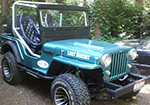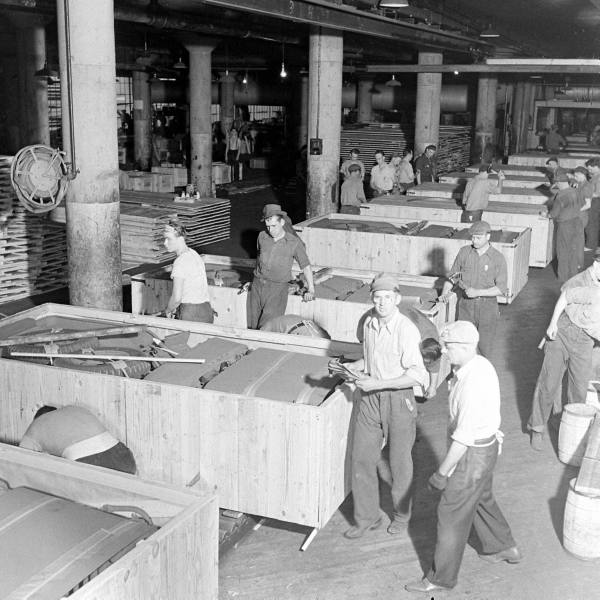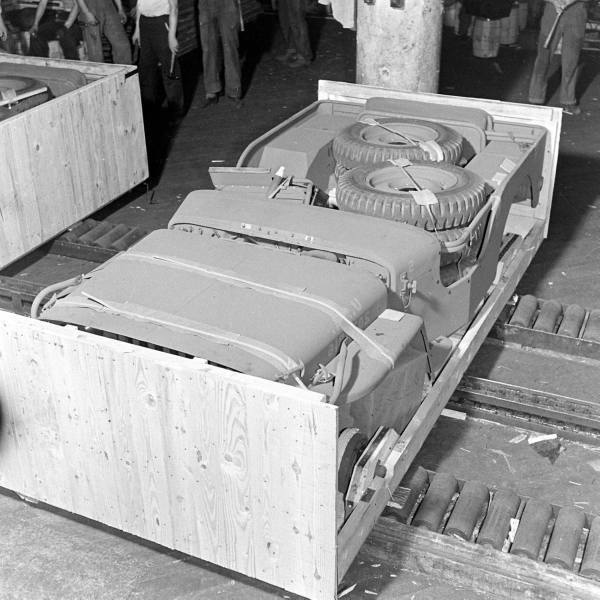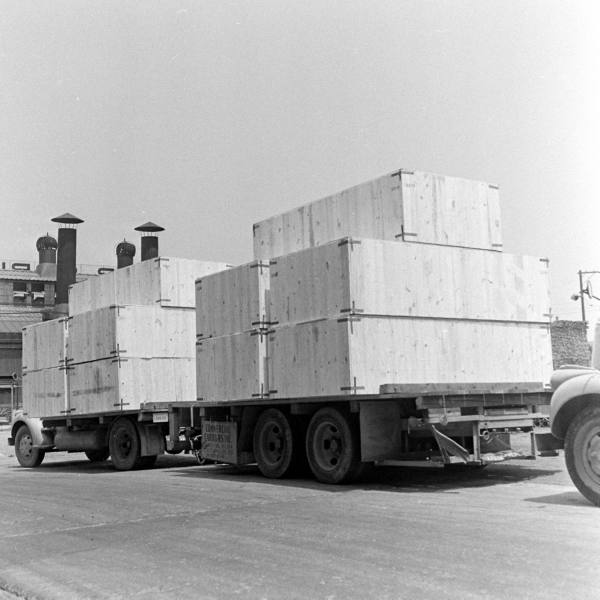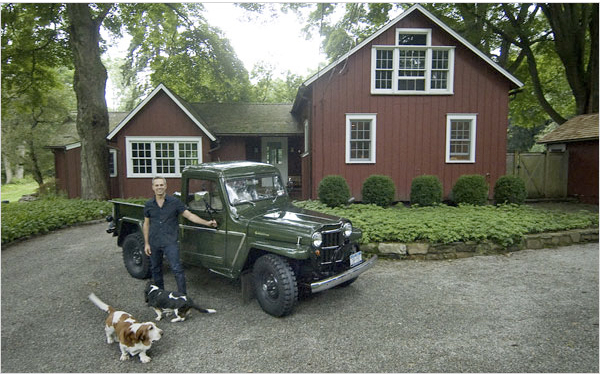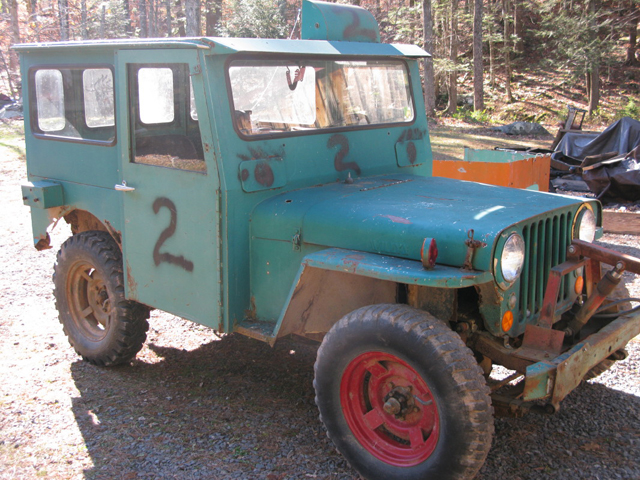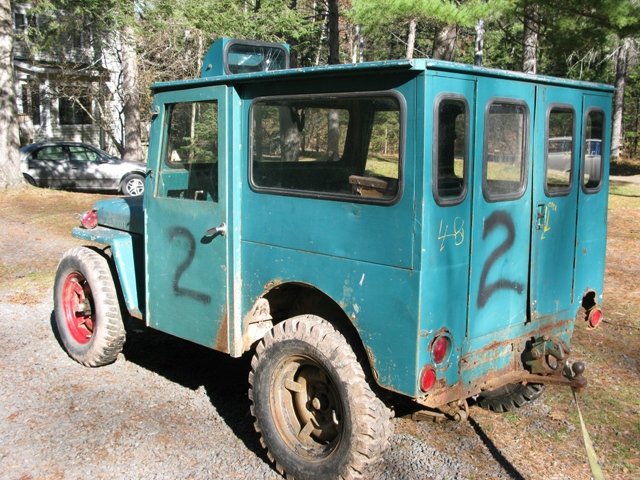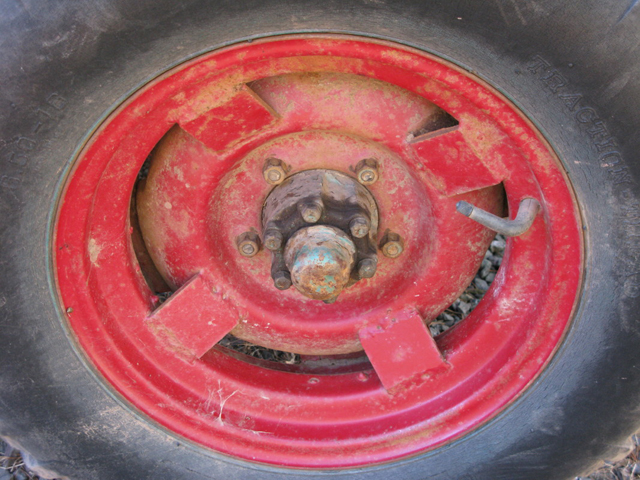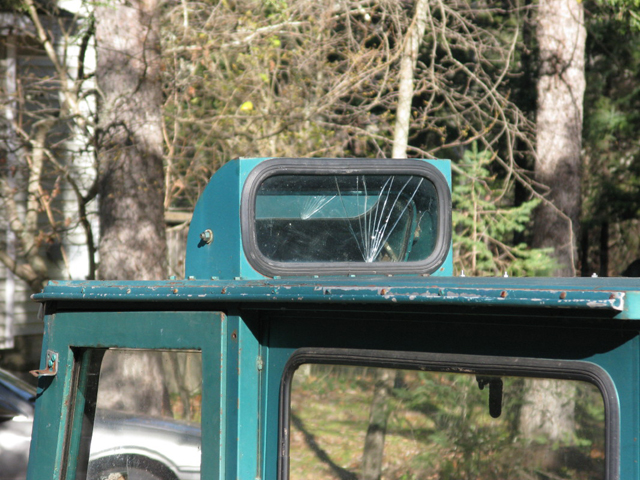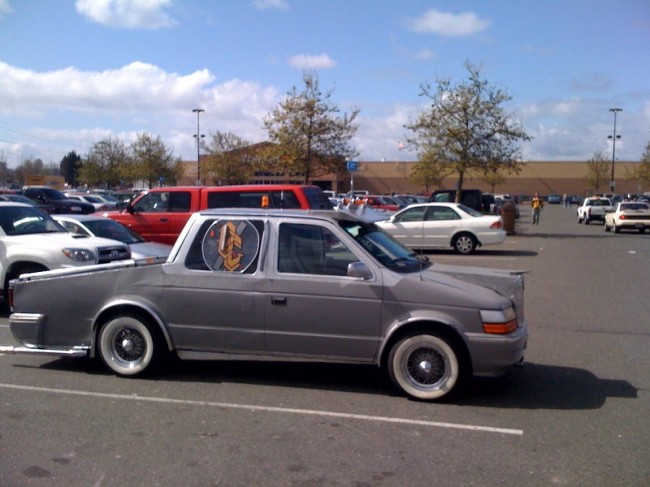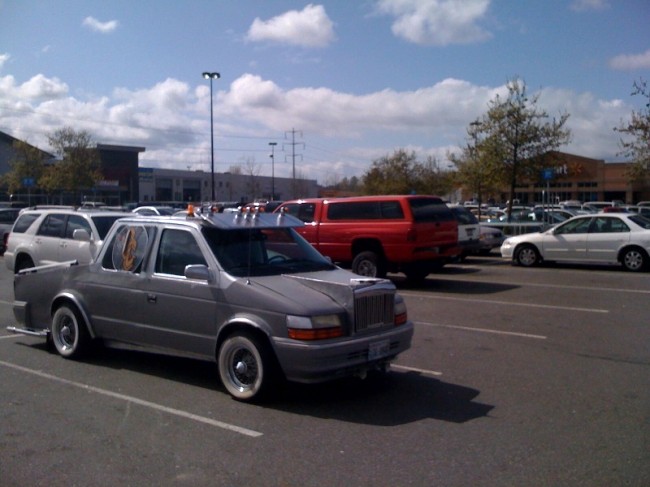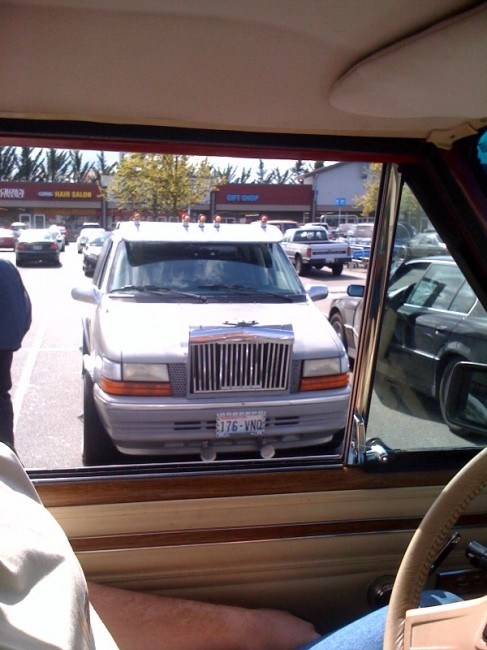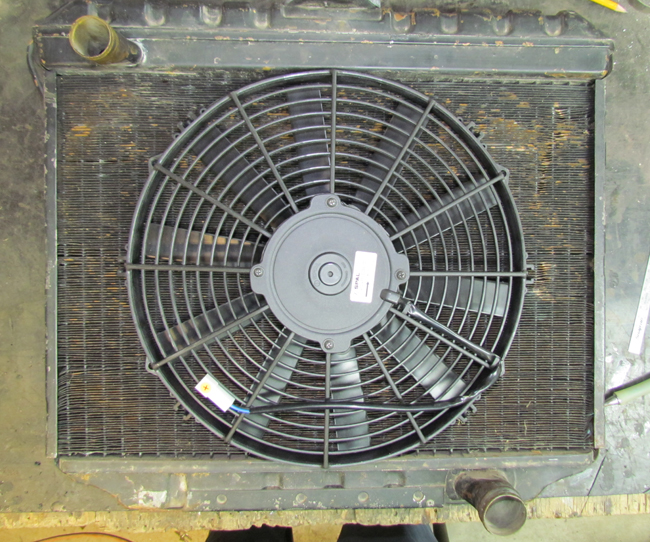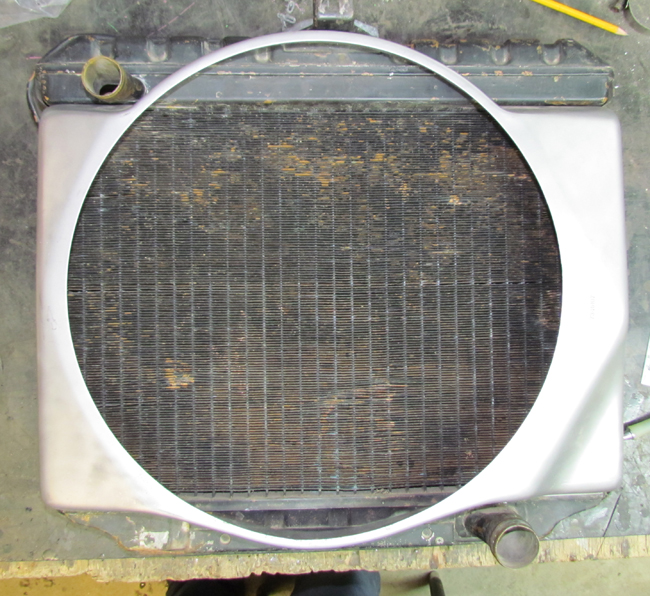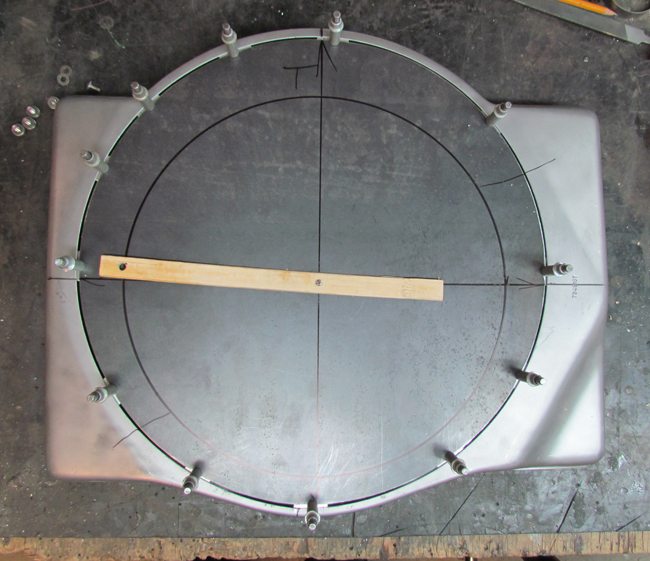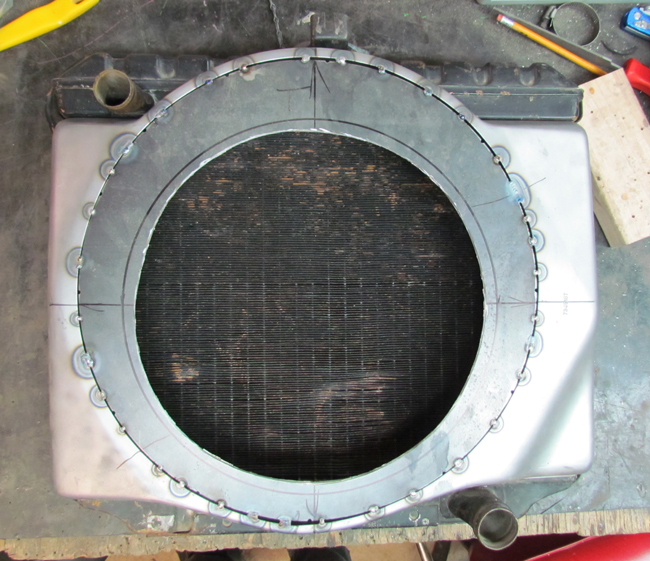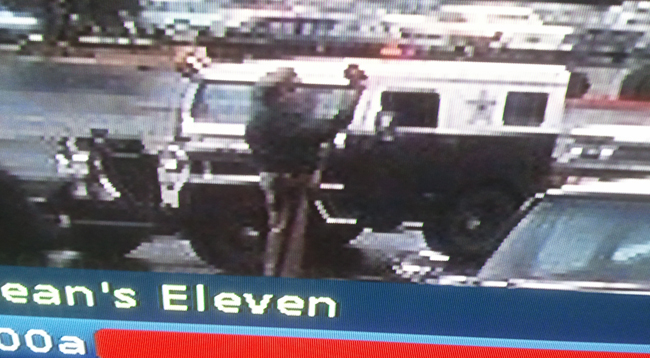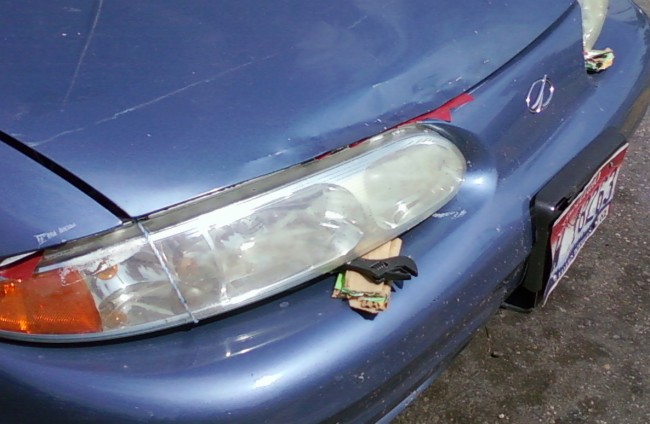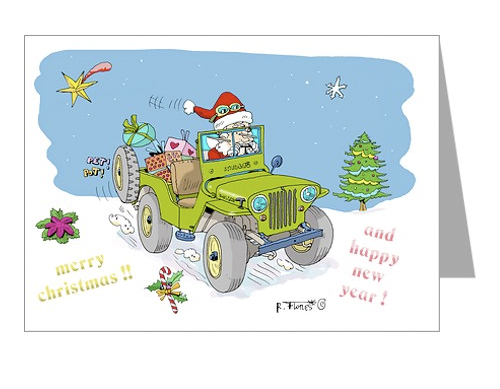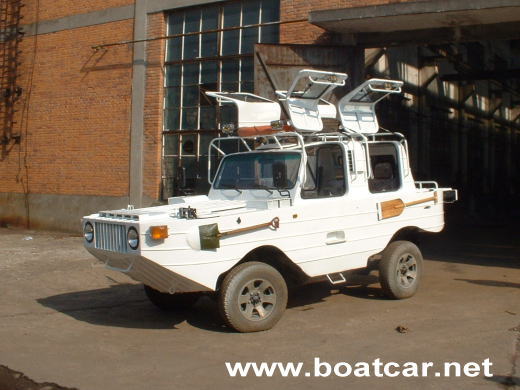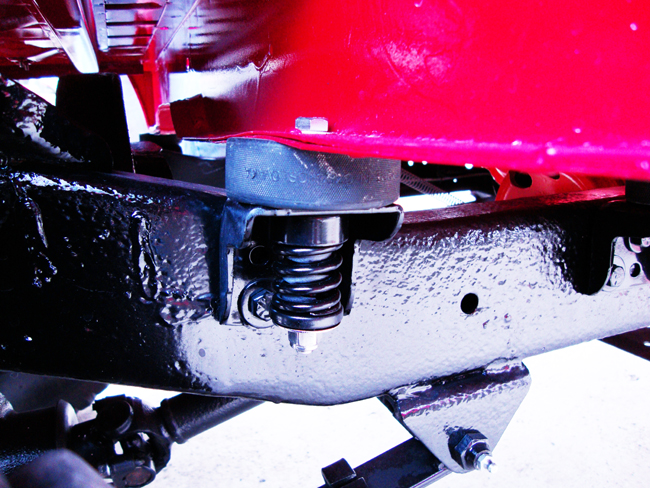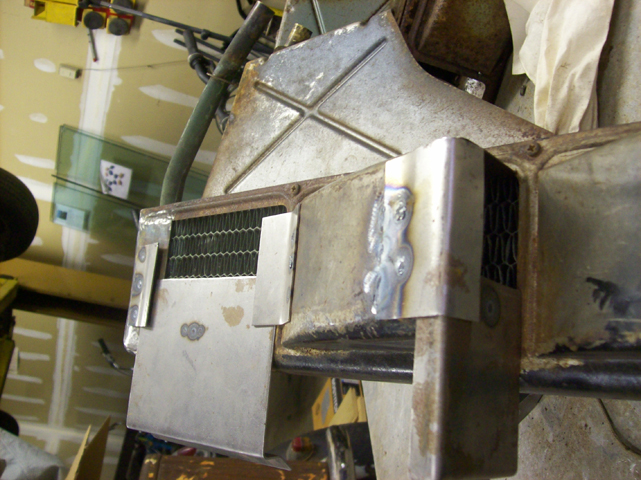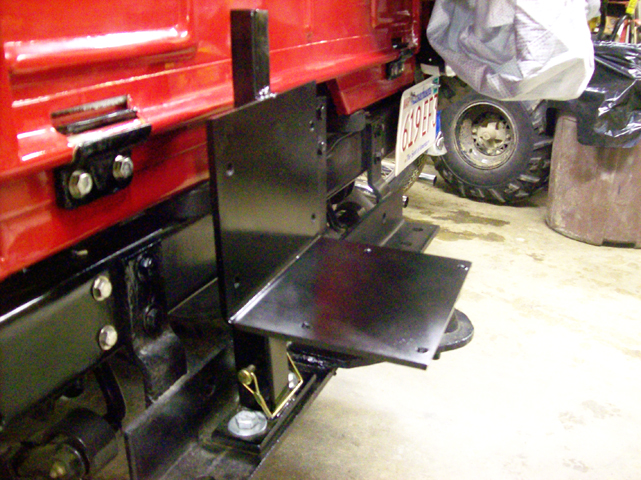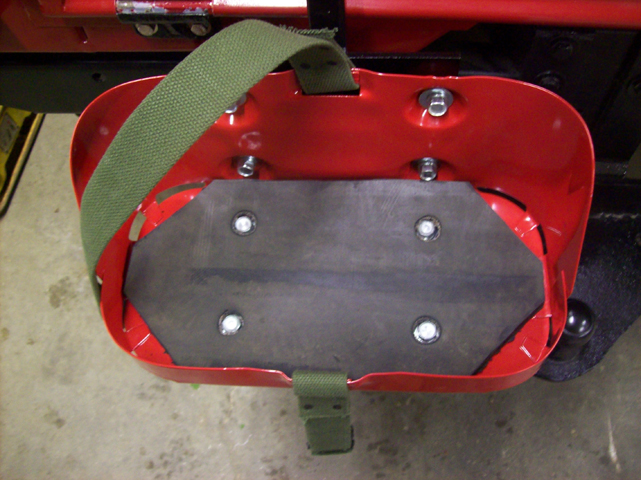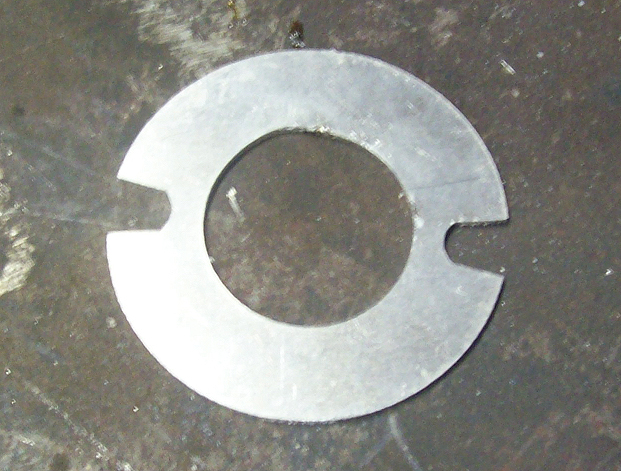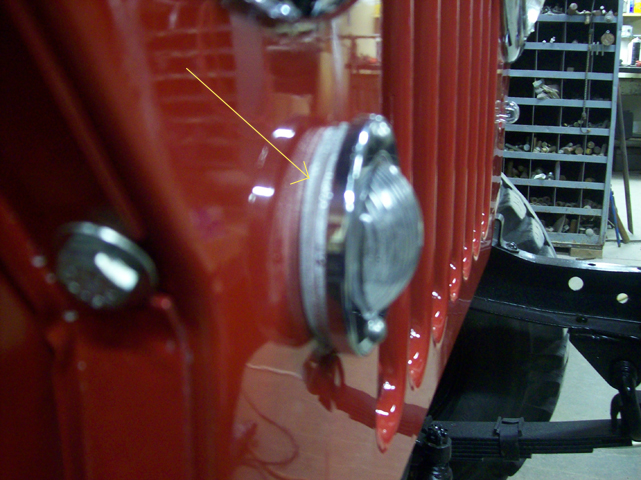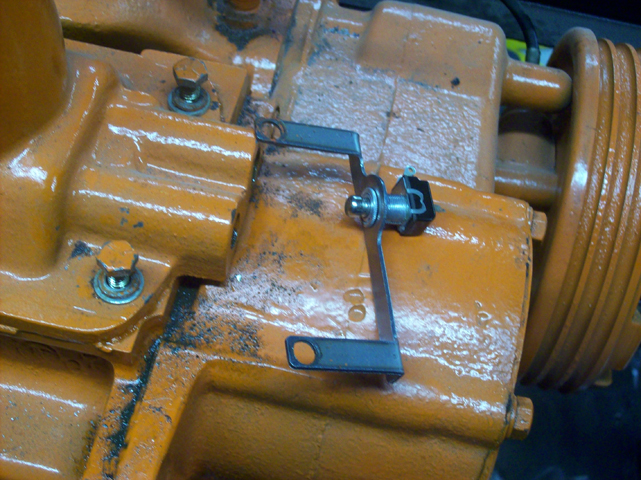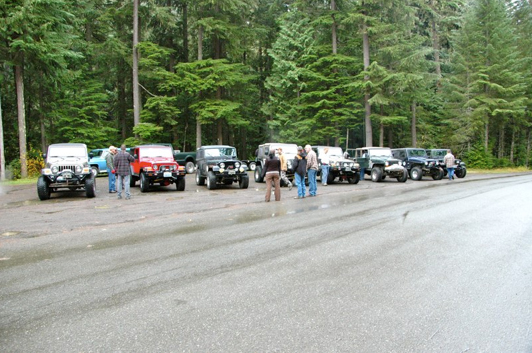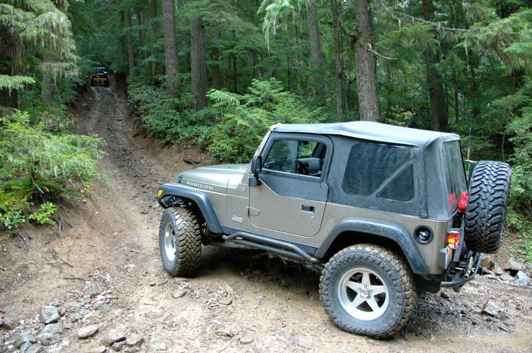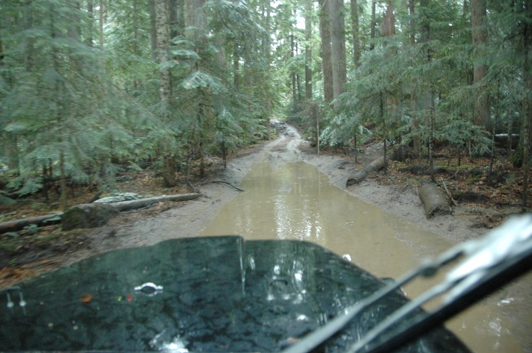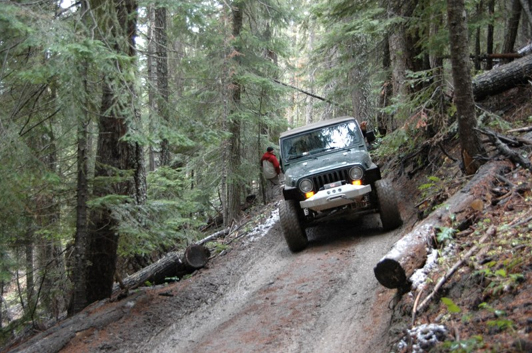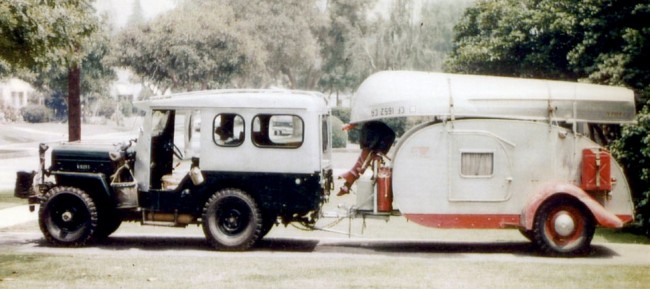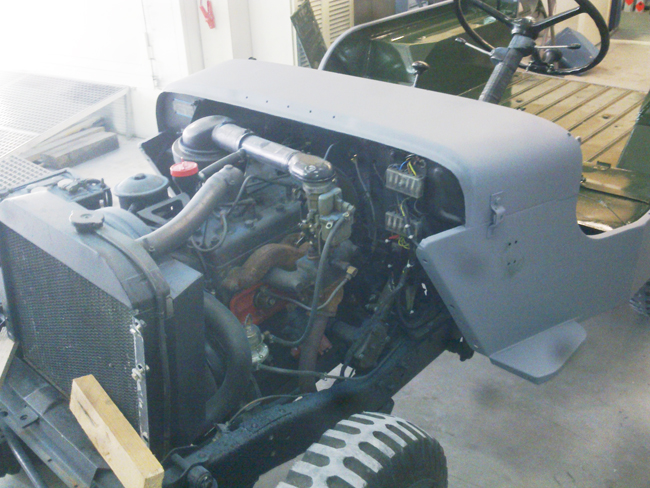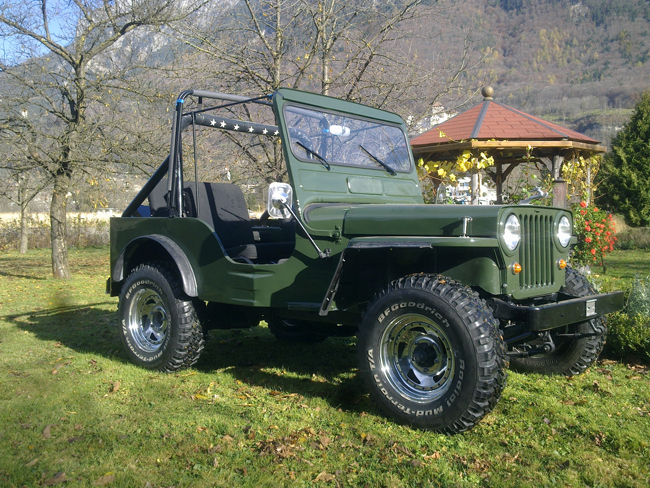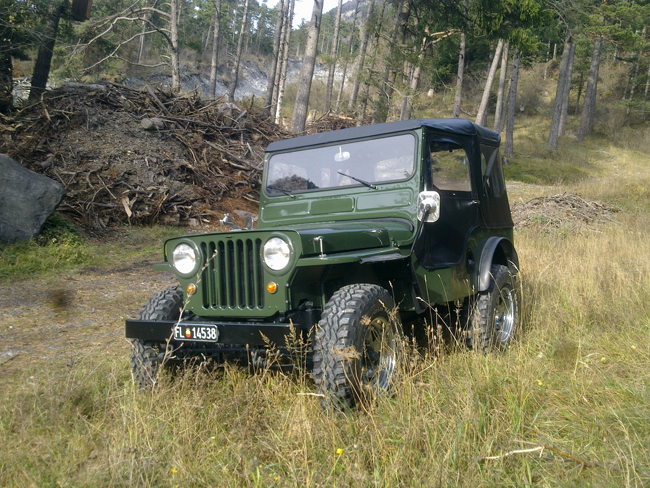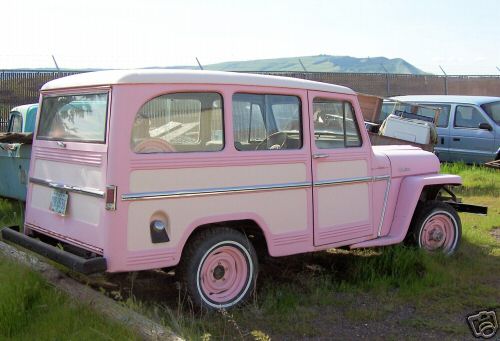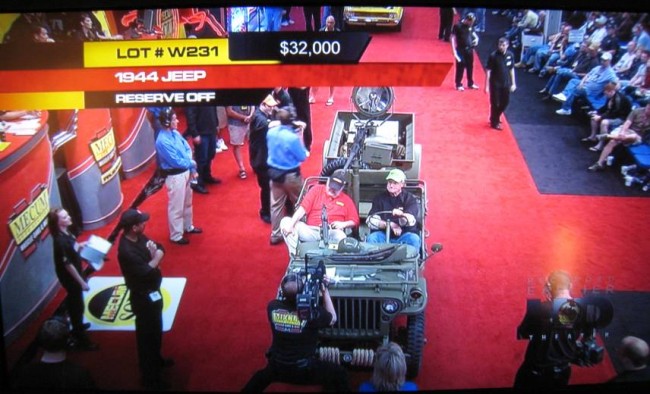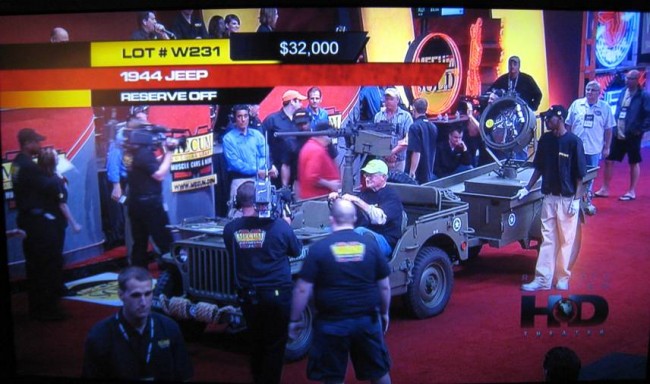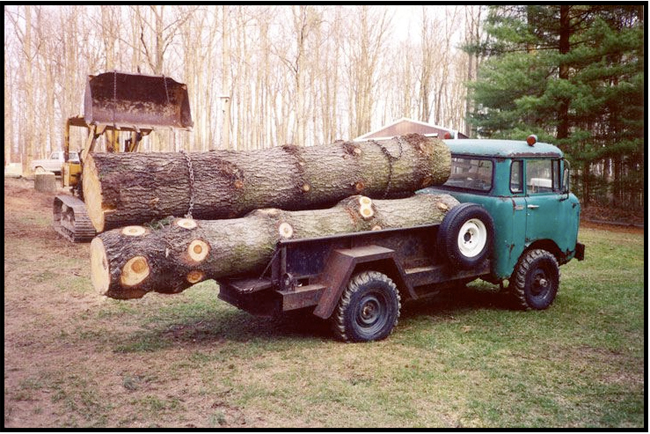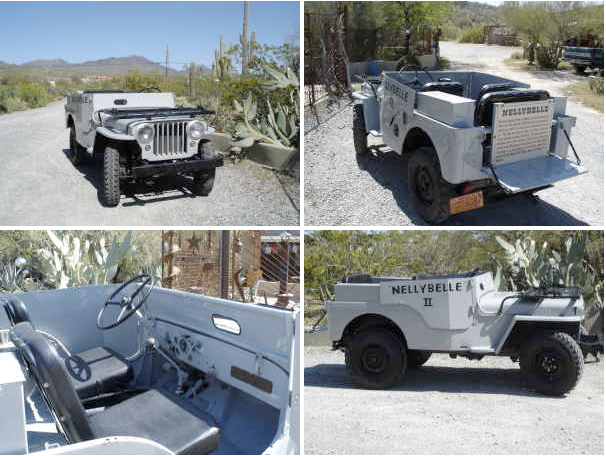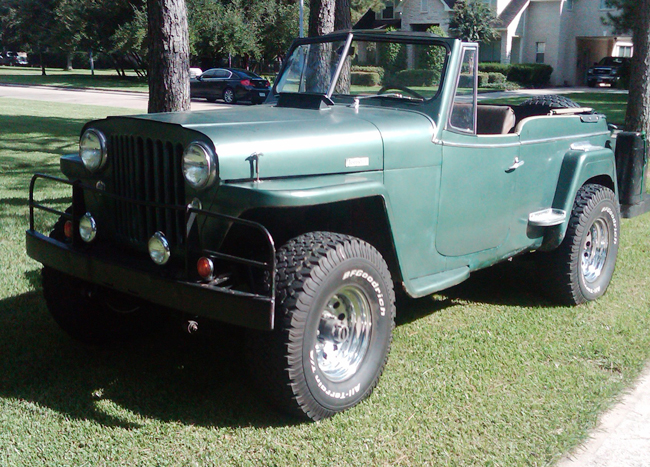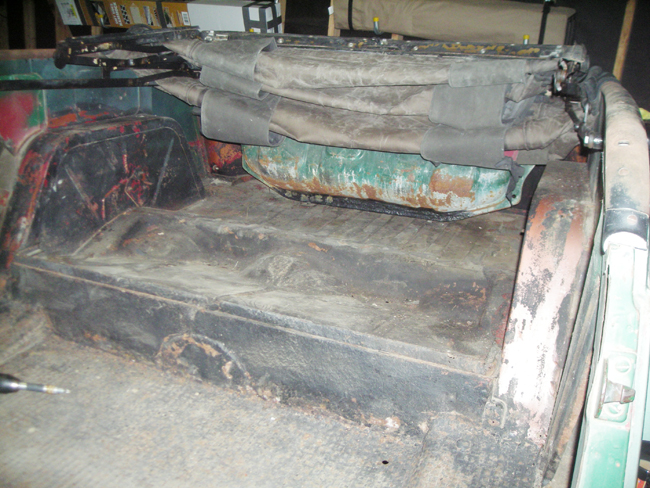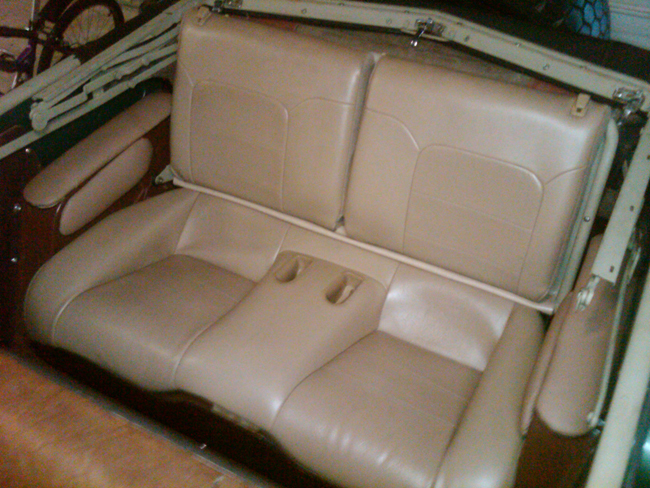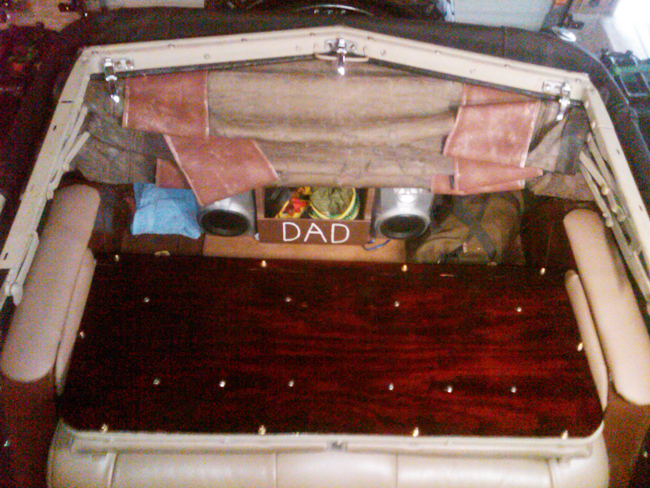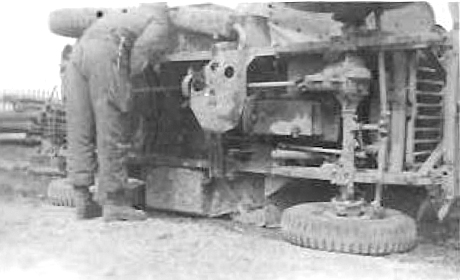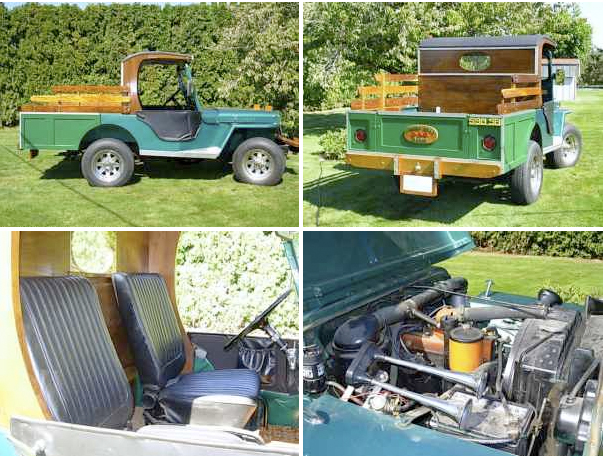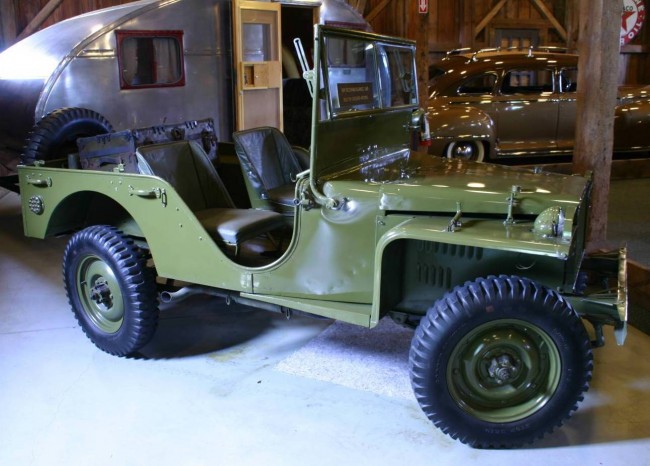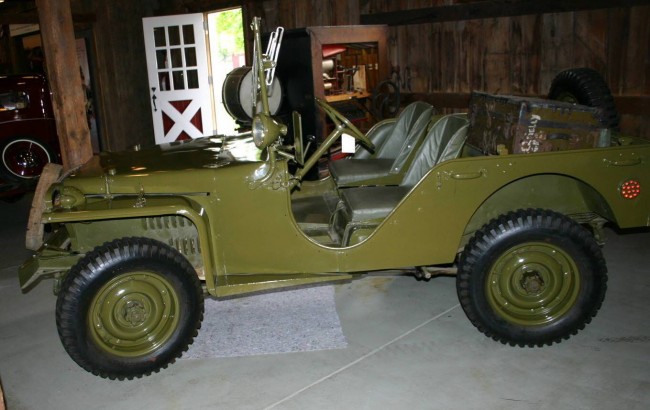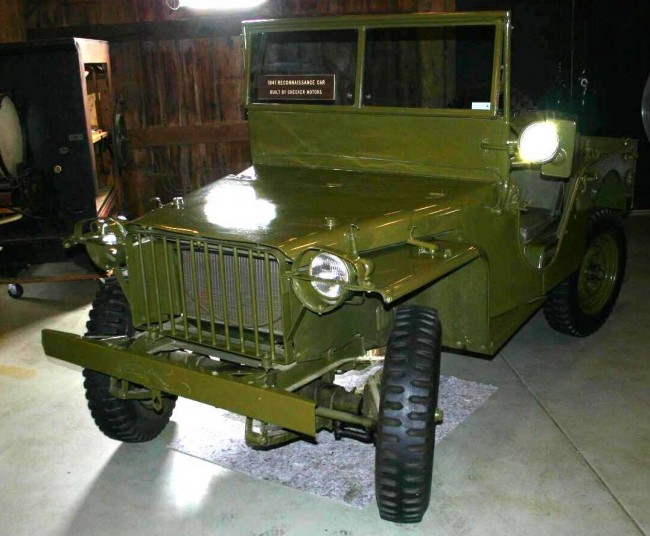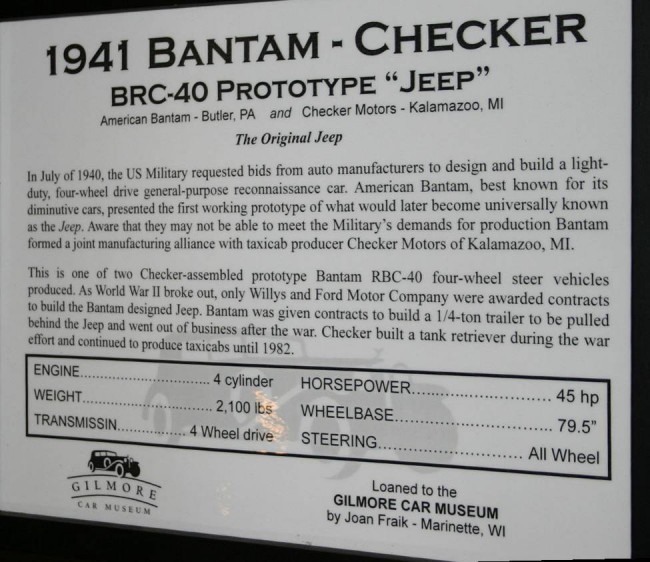Gerald found an old email with some great links. Here are a few of some crated Willys. I don’t have any background or ownership information on them.
Features Research Archives
Happy Thanksgiving!
I’d hoped to develop some sort of Thanksgiving themed post to celebrate Thanksgiving, but as it turns out there really aren’t many images of jeeps dressed as turkeys … go figure.
Instead, I happened upon this NY Times story of a guy named Harry Allen and his dad’s truck. To get right to the point, Harry restored it ($40k) and it’s a beautiful restoration. There’s also a slide show that accompanies the story.
Andy’s 1947 CJ-2A Airport Jeep
A reader named Andy contacted me the other day about a flatfender that he purchased. He was told it was a former airport Jeep. Anyone recognize some of these mods? How about them rims!
Andy writes, “No data tags inside the body, but need to check the firewall tomorrow. The guy I bought the jeep from says that he saw another one with the same wheels on it at the hunting camp where he got this jeep …. There is some use of aluminum in this body, goes hand in hand with the airport shop mod theory …. It appears that the patches in the floors and sides were not really needed at the time they were done.. the body was still very sound in those areas. Looking in the wheel wells, you can see the original not rusted body covered by a layer of metal from the top. I think you may be right on the combination of manuf. top with some airport shop ‘extras’. Those doors sure are unique, I have not seen such before ..”
Flatfender Tow Truck
I found this image on the web at a fake webpage (on of those pages that aggregates a bunch of misc stuff in hopes of getting click throughs). It looks like a pretty cool build. Anyone ever seen it or know any history?
Another Walmart Vehicle
Paul is back in the Garage — Year 25 …
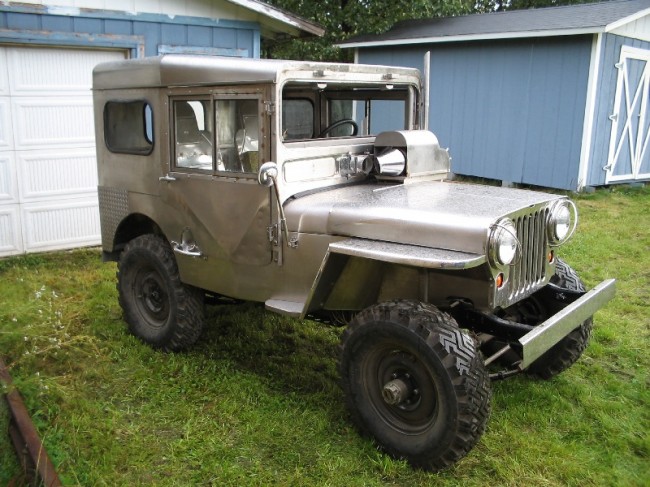 With winter descending on Alaska, the time has come for Paul to direct his focus back on his beloved, shiny, stainless steel M-38. One exciting difference between this year and the previous 24 years is that he is almost done — But no pressure Paul! Click on the pic to see the original post and followups.
With winter descending on Alaska, the time has come for Paul to direct his focus back on his beloved, shiny, stainless steel M-38. One exciting difference between this year and the previous 24 years is that he is almost done — But no pressure Paul! Click on the pic to see the original post and followups.
Last spring, Paul reported that after some investigation, he discovered a M-151 radiator would fit perfectly into his engine compartment. Recently, he took over an auto parts store (ok, maybe just a hose booklet in the store) to figure out a hose solution. With that problem solved (it took 2 different hoses and a tube to link them), he now must figure out a fan solution.
With that background, take it away Paul …..
The Fan and Shroud
Paul writes, “After talking with the folks at Spal concerning their electric fans I ordered a 13 inch puller fan with straight blades along with a fan relay/installation kit. The crazy part about this deal is when the Spal people wouldn’t sell me a fan over the phone, I would have to hang up and order on the internet and best of all I would pay over $50 dollars more for the fan and temp sensor/wiring kit than a Spal dealer in California was charging for the exact same items. For some unknown reason The Fan Man (California dealer) sells lots of these fans at quite a discount and these are brand new fans. No factory seconds, returns, or rebuilt units.
Anyway, the fan arrived last night undamaged and it looks great. Thank you Fan Man! The total fan thickness is slightly under two and a half inches and I have a little over three inches between the aft side of the radiator and the waterpump shaft. Sweet!
The shroud on the M151 radiator has a 16 inch diameter circle for the fan so I bought a ten dollar piece of thin sheet steel, cut out a 16 inch diameter circle and tack welded this piece to the shroud. After finishing with the tack welds I rough cut a 12 inch diameter slightly offset circle to allow for the correct placement of the new fan. I didn’t have a compass large enough to layout a 12 inch diameter circle so I used a stir stick for paint and drilled a pivot hole in one end and another hole 6 inches away and large enough to hold the tip of a sharpie marker. It worked slick. Tomorrow I’ll finish welding the insert to the shroud, clean up the welds and trim the inner circle for a more precise fit to the fan assembly before I attach the fan to the shroud.
Things are looking good. I really didn’t need the relay kit since I’d wired in a fan relay in the electrical box behind the passenger seat but it was cheaper to get the kit with the temp sensor and I could doublecheck the Willys wiring against the Spal wiring so I could identify any potential problems before mean old Mr. Electricity messes something up.
The Fuel Line
Today I received a 25 foot coil of copper/nickel 5/16th fuel line along with the needed fittings to attach the fuel line to the carb. This is the same tubing I used on the brake and clutch systems (just a different size) and it’s a pleasure to work with. The 3/16th tubing is flexible enough to be bent back to back 180 degree bends (with a one inch bend diameter so the tube now looks like the letter S) with no kinking, flattening or any defects at all. Jeeze, I really like working with this stuff. Check out the fedhillusa.com website, it’s amazing. This latest batch of tubing should be more than enough to do all the fuel delivery and return lines with enough left over to cover any mistakes I might make along the way.
Modifying the Skid Plates
The local metal fabrication shop cut and bent an eighth inch thick skidplate for the V6 oil pan. After drilling a one inch diameter hole for the drain plug (that’s the only size hole saw I have) I hand filed the hole to one and a half inch diameter before welding the skid plate to the pan.
I had to do a little work on the transmission/transfercase skid plate also. When I welded up the exhaust assembly I included a joint below the tranny so the right exhaust pipe could be removed without touching the left side or the rest of the exhaust system. What I forgot to figure in was the thickness of the clamp holding the exhaust pipes together at this joint so the skid plate had to be slotted to allow the clamp to protrude slightly. To prevent rock damage (like I’m going to go bashing this thing thru boulders) I welded up a small deflector from eighth inch steel and welded this to the skid plate over the slot. Just another little OOPSIE which needed to be worked around.
Police CJ-3B in Ocean’s Eleven
I have to say, I’m really enjoying my DVR. It used to be that I would just channel surf during commericals just to see what is play. Now, being the sophisticated DVRer that I am, I can channel surf forward in time (which exponentially increases the time I can waste channel surfing) and then record shows that I might want to watch.
One of the shows I found, and recorded, was the original Ocean’s Eleven, which played recently on the Turner Classic Movie Channel. I have to say that I thought it was a pretty good movie; it was also a great look at the Vegas of the 1950s.
Near the end of the movie, I spotted the Police CJ-3B shown below. Unfortunately, the CJ-3B was a background piece, so there weren’t any really good shots of it. I tried to figure out what the wording was along the hood — I don’t think it says “Las Vegas Police Force”.
At a Walmart Parking Lot in Garden City, Id
No doubt most of you have seen the people of Walmart series: inexplicable photos of Walmart Customers in all kinds of dress that leave you wondering what people are thinking.
Well, the other day I was visiting my local Walmart in Garden City. I walked by this vehicle, stopped, did a double take, and muttered something like “seriously?”
Then, I came to my senses; Because, really, what do you do when the cardboard separating your bumper from your headlights no longer provides adequate support? Of course, the natural solution is to slip a crescent wrench into the space. After all, how much damage could a crescent wrench do if it were to get loose and bounce into the car next to you or behind you ….
Roberto’s Holiday Cards and more
Roberto has created some special cards for the holiday season (post cards and christmas cards). Click on the card below to order them.
The Platypus Jeep
So, technically this isn’t a Jeep, but it is kinda of SEEP-like and the folks over at Jalopnik called it a Jeep, so I figured I’d post a couple pics of it. Also, I checked out the website www.boatcar.net and that site has several different SEEP-like vehicles.
Nate has some ideas to share
As part of his CJ-3A restoration Nate left his unique mark on his build with a variety of creative solutions. You’ll enjoy these.
1. “I mounted my body with hockey pucks and valve springs. I did this to my offroad beater too, and they seem to work quite well.”
2. “I made some doors on my harrison heater to get some more heat to the driver’s side.”
3. “I made a removable jerry can holder that bolts to the rear draw bar. This works really well. I carry about 3 gallons in it, and haven’t had any problems.”
4. “To put turn signals in the 3A grille, I made 8 of these spacers (4 per side) to space out the lens to fit the bigger bulb.”
5. “Instead of having a switch on the dash to turn the reverse light on, I made this bracket with a push switch (one that doesn’t click and locks in the “on” position) to turn it on. The plunger is what activates it. This is a really handy mod.”
Fish and Chips 2010
It is winter time and that means only one thing: time for the Wandering Willys Jeep Club to complete their annual Winter run over the Naches Trail in search of Fish & Chips (You might remember their 2009 trip report here). The restaurant of choice was a local favorite called Gold Creek Station Restaurant.
I’ve snagged a few pics from their website. You can see pics of the entire trip here.
Of course, you gotta have the initial line up …
Ready to go Camping ….
UPDATE: I did a little more research and finally found this photo at the CJ-3B Page. There is a complete discussion of the history of the CJ-3B, including a note that the CJ-3B has a custom body extension and a Sears top was purchased that was also custom extended. It’s a good story to read.
I’m not sure where this image might have originated, but I spotted it at expeditionportal.com.
Egon’s recently restored CJ-3A
When I last heard from Egon in early 2010, he was considering mounting a flat fender body onto his CJ-5. However, during the intervening months he had the opportunity to purchase a mostly restored CJ-3A, which was originally brought to Europe for the Swiss Army.
The body on this flattie was replaced about 12 years ago, while the transmission and engine are original to the Jeep. He spent time this year finishing the project, adding a roll bar, new rims and new tires. He plans to use his new toy to hunt and explore in and around his Liechtenstein countryside.
I’ve also included a couple pics Egon sent me about a recent hunting trip to Russia where he spent time with some friends. In his email about the trip, he mentions the All-Wheel-Drive Niva, about which I was unfamiliar; So, I researched the Niva, which lead to this post. He notes that the Niva functions well on the Russian terrain of Kirov, however it is a little small for a hunter and all his gear.
After Restoration
Rat Patrol and another tipped Jeep
As part of the ongoing series on jeeps tipped on their sides for repair, a reader named Warren reports that the first episode, season 1, 14:51 minutes into the show of the Rat Patrol features a brief view of one of the characters working on a Jeep on its side. I don’t have a copy of the video, but here is a snapshot courtesy of Warren.
Pretty in Pink Wagon
I’m not quite sure how, but I stumbled upon this pink wagon from the Haxadecimal.com site which was listed on ebay in 2006. This is one of a wide variety of unusual vehicles you can find at that site.
And now for some levity …
After last night’s post, I figured readers needed something more humorous. So, during some searches today, I stumbled upon some funny definitions of tools. It turns out these definitions have landed on a number of forum sites, however not many sites attribute this clever bit of writing to the original author, Peter Egan. Thanks to Swapmeetdave for doing some research into this.
Without further ado here are a few of these …
Electric Hand Drill: Normally used for spinning steel Pop rivets in their holes until you die of old age, but it also works great for drilling rollbar mounting holes in the floor of a sports car just above the brake line that goes to the rear axle.
Mechanic’s Knife: Used to open and slice through the contents of cardboard cartons delivered to your front door; works particularly well on boxes containing convertible tops or tonneau covers.
Drill Press: A tall upright machine useful for suddenly snatching flat metal bar stock out of your hands so that it smacks you in the chest and flings your beer across the room, splattering it against the Rolling Stones poster over the bench grinder.
Hacksaw: One of a family of cutting tools built on the Ouija board principle. It transforms human energy into a crooked, unpredictable motion, and the more you attempt to influence its course, the more dismal your future becomes.
Additional ones I found here, though they could be from Peter as well …
Pry Bar: A tool used to crumple the metal surrounding that clip or
bracket you needed to remove in order to replace a 50¢ part.
Hose Cutter: A tool used to cut hoses too short.
Two-ton Engine Hoist: A tool for testing the tensile strength on
everything you forgot to disconnect.
Dammit Tool: Any handy tool that you grab and throw across the garage
while yelling “DAMMIT” at the top of your lungs.
It is also the next tool that you will need.
The $32,000 MB Sold on Mecum
Earlier this year, Greg reported that a MB and trailer sold at a Mecum for $32,000. Now he has the pics to prove it. That’s dedication! 🙂
A Big Load
Rich forwarded this image of an old FC with a big load from this website. Cool pic!
Nellybelle II 1946 CJ-2A Cave Creek, AZ **Status Unknown**
UPDATE: The original NelleBelle sold for $116,000 at Christie’s in the summer of 2010, which is much higher than the $20k-30k it was estimated it would bring.
Jim forwarded this for our viewing pleasure. So if I understand this correctly, this is a replica of Nellybelle, but wasn’t actually in the show? You can learn much more about NellyBelle and Roy Rogers and the CJ-3B Page.
‘This is the 1946 Willys CJ-2A Jeep named NELLYBELLE II, and made to replicate the jeep NELLYBELLE from the ROY ROGERS TV show from the 1950’s. It has been on display at the Roy Rogers/Dale Evans Museum in Branson,Mo. This is a piece of History of the 50’s Hollywood television history. It’s in excellent condition as it was at the museum as it has been garaged since we bought it. It starts fine but will smoke some,tires are a little dry.Has new brakes and drums, a new fuel pump. Beautiful piece of memorabilia to expose at parades,auto show,etc..”
Mark’s Rear Seat Solution for his Jeepster
Mark recently hit the 1 year anniversary with “Her Royal Highness” (That would be his Jeepster, not his wife). He’s been updating her throughout the year. Here he comments on his rear seat find.
Mark writes, “Halloween night marks the end of Year one for the 49 Jeepster I named “Her Royal Highness”. I’m a middle-age crazy rookie that knew very little about rebuilding an auto when I started (some strong arguments that I still don’t) [ed note: some days, I don’t feel to smart either!]. I decided to leave the aged patina Windsor green paint for now because there’s very little rust and it doesn’t look that bad. She’s a great runner and a fine Sunday truck.
I wanted to put in tan leather buckets to improve comfort and to be able to call her the original “King Ranch Willys”. A few days ago I saw an ad for 1999 Mitsubishi Eclipse seats, ‘$20 bucks and wife wants them out of my garage’. So, I went over to check out the seats. I discovered the buckets were trash, but the back was practically new. I bought it and carted it home.
Wouldn’t you know, that back seat fit into the back of the Jeepster like it always belonged! A couple of cleats, some zip ties, a little leather remnant from the fabric store over some 3/8″ ply and here you go. The seat backs fit on the original back frame with a little ingenuity. Folded down it makes for a convenient map table. The front buckets are still in my cross hairs and they will be found eventually, but who knew that backseat would fit so nicely, 50 years later!”
Here’s a reminder of “Her Royal Highness”
Here’s what it looks like with no seat:
Here’s the seat installed:
Here’s the seat folded down:
Hein’s Updated Electronics re-Power his F-head ….
I received an email from Hein a few days ago regarding his CJ-3B. His email is a good reminder that if your engine lacks power, you might consider improving the electronics. Thanks for sharing!
Hein writes, “Since the rebuild last-year, I have been putting-off the replacement of the hand-brake cable. So a call to Marathon-Spares (in Australia) was way overdue! While ordering these spares I had a chat with Neil about my rough running engine, thinking I should get a new set of points and condensor as well as bushes, cap etc for the distributor.
He told me he had just replaced the motor in his MB with a Toyota 2.4, because it is used as a daily-driver and advertising for his business, so he offered me the complete Dizzy out of his motor for a mere $75! Needless to say I didn’t hesitate a moment to include that in the package as well. The interesting bit is that it is a solid-state unit requiring a Electronic-coil and the removal of the wound-wire ballast-resistor (we had to get a Auto-Electrician in to help with the wiring bit), but the result could not have been more Amazing!!!
Suddenly, it felt like I had replaced the whole motor ! The old F-head had so much more punch that it blew out the rusty spots on the muffler, so just yesterday I replaced the whole system with a slightly larger-diametre complete Stainless-Steel system, which not only further enhanced the performance but also gave the old-girl a distincly cocky snarl too. I don’t think I am exagerating if I say the combination must have increased overall output by between 30 and 5o%! Other than finding a completely new one that was preserved in a time-capsule somewhere, this must be as close to driving one straight off the dealers floor in ’53 as you can come today. I won’t even trade it for one of those brand-new Icon Replicas now, although I wouldn’t mind having one of them as a daily-driver too?”
Another Tipped Jeep gets some work ….
A while back, Tom told me his dad has stories from WWII about flipping Jeeps on their side to work on them. After some digging, he managed to locate this for our viewing pleasure. Many Thanks Tom! See some other tipped jeeps here.
1948 CJ-2A Yakima, WA **SOLD**
UPDATE: **SOLD** Was $4200.
Can’t say I’ve seen anything quite like this mod.
“Classic 1948 Jeep CJ3A. Mostly original, including motor. 12V conversion, saginaw steering. Always garaged. 42,000 original miles. 3rd owner. No rust, never wrecked. You won’t find a cleaner original 1948 jeep.”
Museum: Gilmore Car Museum & The “Checker” BRC-40
The Gilmore Car Museum in Kalamazoo, Mi, “includes eight historic barns, a re-created 1930s service station, a small town train station, and nearly three miles of paved roads.” This complex houses a large and diverse collection of automobiles and automobile memorabilia in a truly unique setting.
One of the vehicles housed at the Gilmore is one of three BRC-40s assembled (or built or rumored to have been built) by the Checker Automotive Company. I’ve looked into the various bits of information about the Checkers and there seems to be no better summary of the status of these unusual BRC Prototypes than what Bill Spears, who has written extensive about Bantams and early Jeeps, wrote in a Hemmings Blog Comment about the Checker:
The Checker ‘episode’ is still one of the great mysteries of the jeep story and I cannot figure out for the life of me why…. In Kalamazoo it is widely assumed that the Checker was built there from Bantam plans. Karl Pobst’s notes indicate that he did indeed send Checker the blue prints in three installments (and I would REALLY like to get my hands on those and I suspect they are still at Checker) but, my information is that three jeeps, two of them four wheel steering, were sent to Checker from Butler and they arrived in boxes as for shipping overseas. There is nothing at all to indicate in the Checker I had that it differed in anyway from a regular Bantam BRC. All the parts cast with Bantam numbers etc. However all the jeeps were completely disassembled for reverse engineering as it were to try to cost out the job. The parts were all put in a pile, then the cars were reassembled without regard for which parts went were. Thus, my car had a 4 wheel steer column, but it was two steer. One was sent to the Army and wrecked in testing.The car at the Gilmore still belongs to the Stout family I believe. Jim Stout, who knew what he was doing restored the car, but in a way tried to disguise it, and it sat in the Checker lobby for years as a Kalamazoo built car. I think Stout made an interesting contribution in making it possible to turn OFF the 4 wheel steering feature, but, the 4 steers were never really produced. If anyone has any information or leads I would sure appreciate hearing about it.
I found some good images of the “Checker” at the Gilmore museum from remarkablecars.com:
Bill Spears has an extensive discussion about Checker and Bantam with images:
https://wmspear.com/Bantam/excker.html
The olive-drab.com site also has some archival images and information on the Checkers:
http://www.olive-drab.com/idphoto/id_photos_bantam_checker.php
